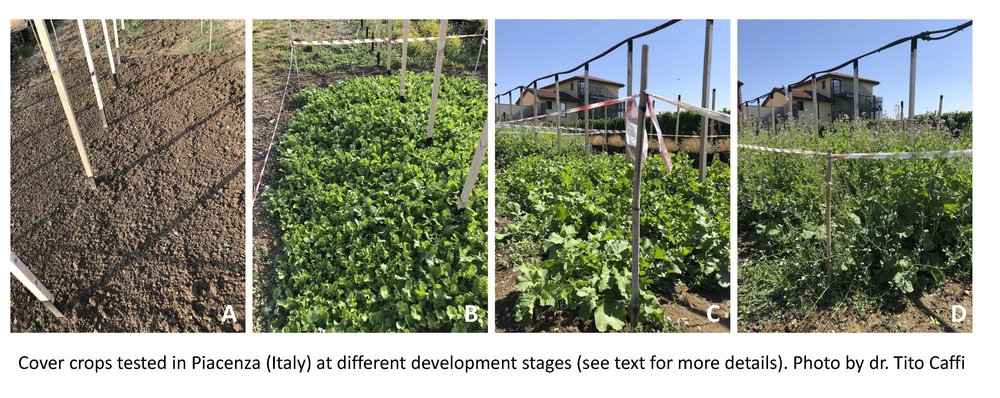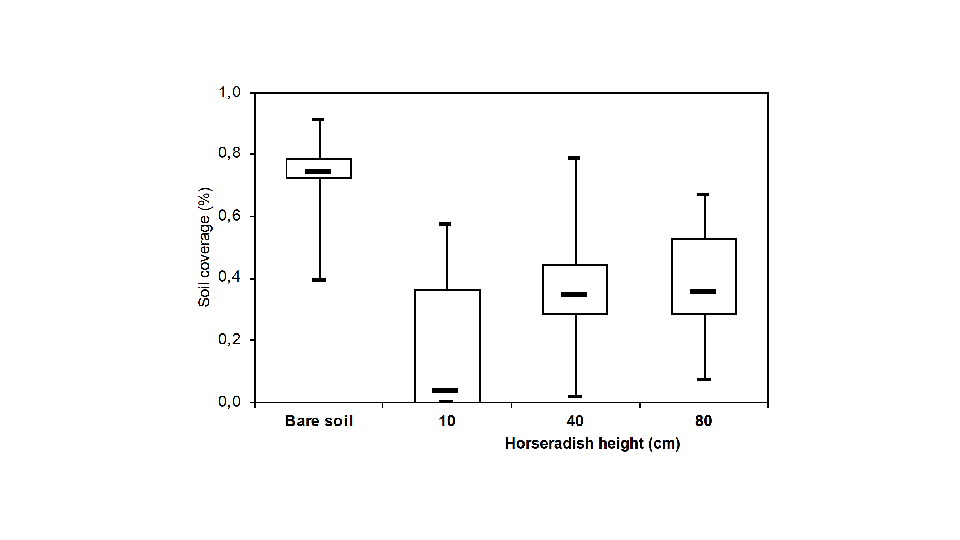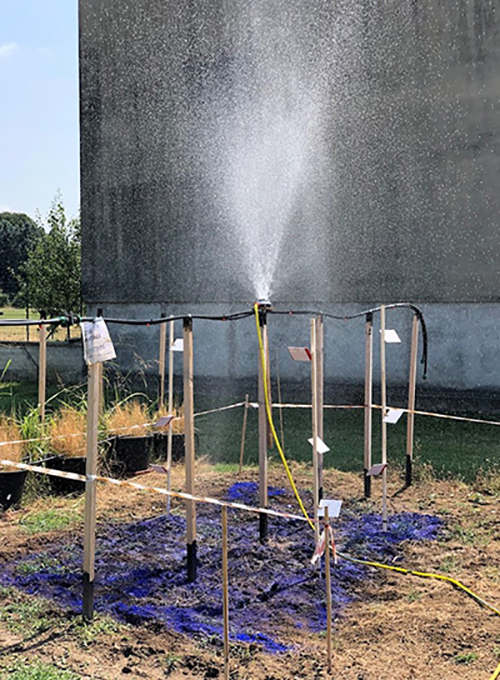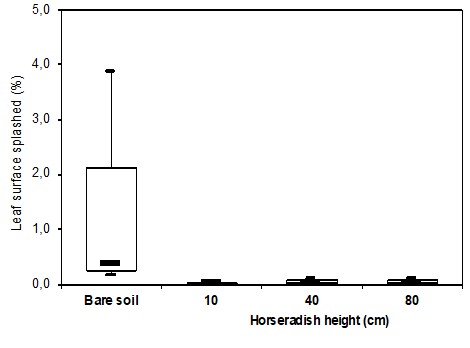Cover crops can mitigate effects on grape pathogen dispersal
Different kind of ground covers has been indicated as an efficient way to limit rain-splashed dispersal of disease-causing spores in several crops, but not in vineyards. In the CORE Organic Cofund project BIOVINE cover crops are tested to reduce both splash- and air-borne diseases.

Plasmopara viticola, Botrytis cinerea, Guignardia bidwelii and other fungi, as the fungal trunk pathogens Phaeomoniella chlamydospora and Phaeoacremonium spp., are able to produce inoculum (spores) on plant debris present on the soil surface of vineyards. These spores can then reach plant surfaces through rain splashes and/or air currents, being responsible of severe grapevine infections when environmental conditions are favorable. Many management strategies have been developed against these important grapevine pathogens, but the effects of soil cover vegetation or organic mulching against spore dispersal, acting as a barrier, have been scarcely explored. Ground cover has been indicated as an efficient way to limit rain-splash dispersal in several crops (e.g. Septoria tritici on wheat crops, Colletotrichum acutatum on strawberry), but not in vineyards.
Thus, in the BIOVINE project (www.biovine.eu) specific experiment were planned in order to verify the possibility of using cover crops to control some relevant pathogens producing inoculum (spores) on plant debris (leaves, canes, mummified berries) present on the soil surface of vineyards. The main goal is to verify the possibility of reducing the amount of splash- and air-borne spores escaping from the soil surface in order to reduce the disease risk and, then, the need of fungicides.
In the campus of the Università Cattolica del Sacro Cuore of Piacenza, experiment in small plots were set up, either grown or not with cover crop plants, and sensors for rain splashes on both ground and virtual grapevine leaves have been placed. Different plots were created sowing horseradish (Armoracia rusticana) at different timing in order to have simultaneously different cover crop heights (none on bare soil, plants developed in about 10, 40 and 80 cm in heights; Figure 1 below). In two separate experiments the percentage of soil directly reached by rainfall drops and the dispersal of rain splashes on leaves were assessed.
| Figure 1 |
|---|
 |
In a first experiment, small strips of blotting paper were randomly placed on the ground in the different plots, then artificial rainfall was provided using a blue coloured water. The number and dimension of each drops was measured by means of an imagine analysis software (Assess 2.0). The rainfall drops were able to reach the soil, of course, in all the experiment repetitions performed, even if the average value was significantly lower in the plot where the cover crop was growing. Interestingly, the most relevant difference was observed in the plot where the horseradish was at the beginning of its development (about 10 cm in height, picture 1B). This was due to the almost perfect soil coverage performed by the cover crop that in this stage is expanding its leaves increasing the “shield” effect on the soil.
Boxplots of soil coverage observed in the different experimental plots |
|---|
 |
In a second experiment, the soil was uniformly covered with a coloured powder, highly hygroscopic, in order to mark raindrops when they touch the soil (Caffi and Rossi, 2012). Blotting paper strips were placed at different heights (i.e. 40, 80 and 120 cm) in each plot in order to catch the coloured splashes (see picture below):
Ongoing experiment of rain splashes dispersal on bare soil: artificial rain drops are coloured when touch the ground and the splashes are absorbed by the blotting paper positioned at different heights. Photo by dr. Tito Caffi |
|---|
 |
The number and dimension of each drops was again measured by means of the imagine analysis software. The highest number of splashes colouring the artificial leaves were observed on bare soil, while the presence of the horseradish was able to significantly reduce the number of potential dispersals of soil-borne or soil-transient pathogen propagules (Figure below):
| Boxplots of rain splashes observed on artificial leaves in the different experimental plots: |
|---|
 |
Data showed also a significant difference in the heights reached by rain splashes in each plot (data not shown).
These small-scale experiments showed that the soil coverage and the canopy structure of the cover crop are able to significantly reduce the dispersal of pathogen spores trough rain splashes. Similar experiments are ongoing also for the fungal trunk pathogens Phaeomoniella chlamydospora and Phaeoacremonium spp., dispersing propagules by means of rain splashes, and for Botrytis cinerea, dispersing propagules by mean of wind gusts.
Relevant links
BIOVINE project website, www.biovine.eu
Rossi V. and Caffi T, 2012. The Role of Rain in Dispersal of the Primary Inoculum of Plasmopara viticola. Phytopathology, 102(2): 158-165. https://doi.org/10.1094/PHYTO-08-11-0223
Authors info
Tito Caffi, DIPROVES, Università Cattolica del Sacro Cuore, tito.caffi@unicatt.it - https://docenti.unicatt.it/ppd2/en/#/en/docenti/21723/tito-caffi/profilo
Vittorio Rossi, DIPROVES, Università Cattolica del Sacro Cuore, vittorio.rossi@unicatt.it - https://docenti.unicatt.it/ppd2/en/#/en/docenti/03026/vittorio-rossi/profilo
Hasanaliyeva Gultakin, DIPROVES, Università Cattolica del Sacro Cuore, hasanaliyeva.gultakin@unicatt.it - https://docenti.unicatt.it/ppd2/en/#/en/docenti/75373/gultakin-hasanaliyeva
Editor: Karin Ullven / Design: Christine Dilling
